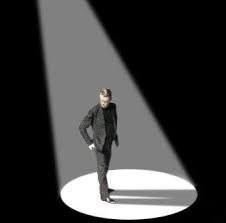New Rules of Safety
The New Rules of Safety: Be careful what you measure
Professor Andrew Sharman offers caution on the desire to set hard measures to quantify the behaviour of workers and suggests that if we’re not careful, we might just get what we measure.

Hawthorne, a suburb of Chicago, USA in the 1920s. Australian sociologist Elton Mayo and his crew turned up to study the effect of the physical work environment on employee productivity.
Day after day the lighting in the workplace is gradually increased and the research team observe dutifully. As anticipated, the productivity of workers is measured to have improved. The scientists continue their experiment, meticulously recording each tiny adjustment to light, and the concurrent boost in productivity. Brilliant news: now, just by increasing workplace lighting businesses around the world could maximize productivity. It must have been an exciting conclusion!
However, just days after the scientists left the factory, the management team noted that the productivity of the workers quickly fell back to previous levels, despite the increased lighting.
Returning to rethink their hypotheses, the scientists advanced that productivity increased not due to the changes in the work environment, but because of the attention levied on the workers by the research team. The ‘Hawthorne Effect’ as it has become known, refers to the tendency of some people to work harder and perform better when they are aware that they are being observed. Individuals appear to change their behaviors as a direct result of the attention they receive.

Is it really this simple? Mayo himself felt there must be more to it. The research team returned to Western Electric in the 1930s and became fascinated by the informal employee groups that seemed to form within the formal structure of the company. By exploring the beliefs and creeds which make individuals feel part of an integrated group Mayo concluded that beyond the power of observation was the importance of group dynamics:
“The desire to stand well with one’s fellows, the so-called human instinct of association, easily outweighs the merely individual interest and the logic of reasoning upon which so many spurious principles of management are based.”
The Hawthorne studies provide three key learnings for those interested in improving safety at work:
- An overt attachment to data analytics can lead us to focus too narrowly on what is measurable or quantifiable, and we essentially get what we measure.
- A sense of team spirit – based on unwritten codes of conduct within the group formed by and within themselves – influences the output of individual workers. Whilst the work environment may be important for comfort and wellbeing, the desire for groups to be seen to be efficient and effective may be a greater motivator.
- The act of observation in itself has the power to influence human behaviour. Human beings usually to want to be observed, quite literally, in ‘the best light’.
The New Rule of Safety #25: Be careful what you measure

It’s vital to provide clarity around what you expect in terms of workplace safety, yet whilst it may be tempting to want to record everything in numerical terms, some of our expectations – especially those related to worker behaviour – may not be quite so easy to quantify.
Think about the process of observing workers in your organisation. Are your workers acting so as to be seen in ‘the best light’? What happens when the light stops shining on them? Does their behaviour change like the workers at Hawthorne?
Read more of Andrew’s New Rules of Safety, here.
Professor Andrew Sharman is a consultant to leaders at Apple, BMW, Burberry, IKEA, Heineken, Jaguar Land Rover, Mercedes Benz, Tata, and more, and the co-creator of the world’s only IOSH certificate in Behavioural Safety Leadership, find out more here. Email team@RMSswitzerland.com and quote SHP25 to get 25% off your course.
In From Accidents to Zero – the world’s best-selling book on safety culture – Sharman shares more than 80 questions that help leaders drive strategic safety improvement, improve culture and enable excellence. Get your copy of the book with an exclusive 25% discount by using the code SHP25 at www.fromaccidentstozero.com to order your copy now.
[vc_row][vc_column width="2/3"][vc_column_text]
The Safety Conversation Podcast: Listen now!
The Safety Conversation with SHP (previously the Safety and Health Podcast) aims to bring you the latest news, insights and legislation updates in the form of interviews, discussions and panel debates from leading figures within the profession.Find us on Apple Podcasts, Spotify and Google Podcasts, subscribe and join the conversation today![/vc_column_text][vc_empty_space height="15px"][vc_btn title="Listen here!" color="success" link="url:https%3A%2F%2Fwww.shponline.co.uk%2Fthe-safety-and-health-podcast%2F|target:_blank"][/vc_column][vc_column width="1/3"][vc_single_image image="91215" img_size="medium"][/vc_column][/vc_row]
The New Rules of Safety: Be careful what you measure
Professor Andrew Sharman offers caution on the desire to set hard measures to quantify the behaviour of workers and suggests that if we’re not careful, we might just get what we measure.
Andrew Sharman
SHP - Health and Safety News, Legislation, PPE, CPD and Resources Related Topics
Safety Leadership: From virtual safety to real safety
Lives depend on asbestos action, says IOSH
Rule-6 tames complexity




Mmmm, subjective or objective measure of before and after allowing for the sub-optimal conditions in the first like, you know, a chicken and egg conundrum, are they broken at the beginning of the experiment or not, are the “given conditions” responsible for their presenteeism and lost productivity and are you measuring “recovered performance” or “enhanced performance” that just maybe sustainable and optimal or just conserving the existing mediocre?
20% or 30 days out of the 52.7 lost productivity the ONS has classified as presenteeism already subjectively measured by the HSE Better Display Screen RR 561 2007 medical review concluding 58% of DSE operators experience eye-strain, CVS, Screen Fatigue or worse visual RSI’s manifesting in loss of 3D vision or induced monocular 2D adaptations, as seen in 50% more children in the 21st Century over-exposed to the near and close-up, scaled in the WHO ICD-10 and recognised as a health burden a Global Pandemic of eye-strain / Asthenopia .
No worries though, it’s going to be a while until DSE Accessibility is legislated although, the 2010 Equality Act already covers workplace disabilities lasting up to 12 months or longer causing transient or permanent vision loss if not mitigated.
Excellent article and well worth revisiting just, understanding everyone is working toward being “future-proof” this still leaves some well known unmitigated risks on the back-burner like 58% of DSE operators suffering presenteeism and debilitating visual repetitive stress injuries increasing overall risk of errors, mishaps and fatigue related accidents.
Eye-strain, CVS or Screen Fatigue resulting in binocular 3D vision loss however, is not just an acquired or induced injury in the workplace but, an age diverse Global Pandemic & visual health burden (WHO ICD-10) as, 50% more children are presenting with myopic and asthenopic disease leaving, 19% of teenagers in education un-diagnosed visual deficits manifesting in reading difficulties, effectively limiting their employability and/or capacity to actively participate in life-long learning and at risk of offending as 2,000,000 are not retained in school pre-16 years old.
Presenteeism in DSE operators performance deficits also accounts for 60% (20% or 30 days) of the total lost productivity estimated by the ONS to be costing at least £33bn plus, double that in social and health costs, and the risk of reacquiring work related stress induced injuries if, the operators screen equipment settings are not ergonomically adapted, customised or optimised for the user.